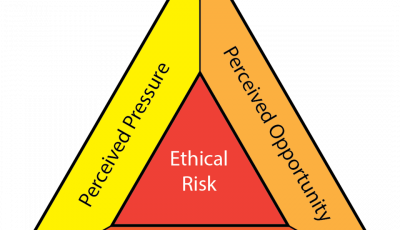A Little Altcoin Sanity: Monero
 Monero, ticker XMR, is one of several altcoins attempting to overtake Darkcoin in the race to become the top anonymous coin. It’s joined in the ranks of the top 20 coins by market cap by cryptocurrencies like XCurrency, Blackcoin, and BitcoinDark – all of which have their own individual claims to anonymity fame. Monero is in a clear second place to Darkcoin, but still trails it rather significantly, with a market cap of only about 35% that of Darkcoin. Monero is somewhat ahead of the other coins it competes with though – 80% larger than XC, 25% past BC, and 20% over BTCD.
Monero, ticker XMR, is one of several altcoins attempting to overtake Darkcoin in the race to become the top anonymous coin. It’s joined in the ranks of the top 20 coins by market cap by cryptocurrencies like XCurrency, Blackcoin, and BitcoinDark – all of which have their own individual claims to anonymity fame. Monero is in a clear second place to Darkcoin, but still trails it rather significantly, with a market cap of only about 35% that of Darkcoin. Monero is somewhat ahead of the other coins it competes with though – 80% larger than XC, 25% past BC, and 20% over BTCD.
So why have so many chosen Monero? What unique attributes does it possess?
Before we delve into that, as always, a brief look at the coin specs:
– Launched April 18, 2014.
– Fair launch – preannounced, no premine.
– Headed up by a team of BitcoinTalk forum members: tacotime, eizh, smooth, fluffypony, othe, davidlatapie, NoodleDoodle
– Linearly declining block reward, rather than sudden halvings – each block contains less than the previous block.
– Difficulty retargeted every block; 60 second block time.
– Anonymity provided through CryptoNote. Read the White Paper here.
– Read the Monero-published review of the CryptoNote White Paper here.
– CryptoNote website.
– Monero Website.
– BitcoinTalk Announcement.
There’s some nice stuff in there. The two features I listed out are ones that show – in my view – careful consideration by the developers.
Retargeting difficulty every block is an innovation that caught on awhile ago, and it is a good one. A very good one. Why? Imagine someone has a huge amount of mining power, and there are 5 coins that all retarget difficulty like Bitcoin does – roughly every two weeks. What is that miner’s “optimal strategy” if they want to mine all of those coins?
To “hash-bomb” coins, one by one. The miner will flip all their hashing onto one coin right after the difficulty retargets, dramatically increasing the hashrate, and then will drop off of it right before the next retargeting. What will happen? The first retarget will happen faster than it should – because the sudden addition of that miner’s immense hashing power will cause blocks to be discovered too quickly – and then the next retargeting will take much longer than it should, because the sudden disappearance of that miner’s hash power (thanks to the increased difficulty resulting from the hash-bomb) will slow block discovery immensely. The result? Very fast blocks for one cycle, and very slow blocks for the next cycle. High additional supply for one cycle, low additional supply for the next cycle. It’s like crop rotating, but with cryptocurrencies instead of vegetables, and ASICs instead of plows.
This is disruptive to the coin’s health, and advantageous to the miner. The miner will continue cycling through the coins like this, because it is to their benefit. This is a serious threat to the coins targeted, because it means they will have a very low hashrate relative to their difficulty. Retargeting difficulty every block helps make this strategy pretty weak – and frees your coin from its threat. Good choice by the Monero devs.
The second nice feature – one present in other coins as well, but still nice to see – is the slow descent of the supply rate. Bitcoin and many of the early altcoins are very “clunky” in this regard – the supply rate ratchets down by 50% every once in a while. A smooth descent is greatly preferable, as is the case with Monero. Consistency and slowness may not be as exciting as “the halvening,” but it leads to a healthier and more sustainable coin economy in the long term.
But enough about these basics – what about the anonymity?
Monero has got it pretty good. CryptoNote is a well-reviewed technology. I’m not a mathematician in any sense, although I enjoy dabbling in a bit of everything academic. In my reading of the various papers associated with Monero’s anonymity, I found little to dispute, aside from the gratuitous grammar errors – a plague that appears to be extremely pervasive among mathematicians and cryptographers alike.
All transactions within Monero possess complete anonymity, unless the sender chooses to forgo it. If they choose not to – and why would you choose to, honestly – their transaction is still verifiable as having been sent through some cryptographic wizardry beyond the scope of this article. Each transaction within the Monero system can not be linked to any identities – sender or receiver. Therefore, the Monero system has the characteristic of unlinkability; defined as “any transaction cannot be proven to be linked to any other transaction with any real probability.” As such, the entire system is untraceable.
So, Monero and Darkcoin. Monero is the clear second-place anonymous coin for right now. What will the fight between it and Darkcoin be about?
Two weeks ago, I would have said source code.
Monero has always been open-source, based on open-source code forked from CryptoNote. The code and the white paper are well-reviewed.
Darkcoin’s Darksend, which “is the name of the decentralized mixing implementation that obfuscates and provides a greater degree of privacy/anonymity to the transactions of the Darkcoin network,” until September 29th, was closed-source. It went open-source as of that point – but until then, the fight between Darkcoin and Monero looked to be about that.
But now, it’s about three factors.
1. How well the Darkcoin (Darksend) source code is written. The community can now look inside and see for themselves what they think. If a few prominent coin developers call it garbage, then Darkcoin will lose on the spot. I don’t expect this to happen, but it is the danger of moving from closed to open source.
2. Branding. Darkcoin has branded itself as edgy; nearly criminal. Monero has gone for a new-ageish appeal. The crowd will decide, and which the crowd picks is also what determines the third point of contention between the two.
3. Market capitalization. Nothing else is more important. At this point, it’s a fight of advertising; connections; money.
Only the market can decide who wins, as always.
Right now, Darkcoin has a sizeable lead – but it has a lot of competition nipping at its heels.
Note: This article has been revised. To be specific, the last four paragraphs have been replaced with nine new paragraphs. Thanks to commenters Petra Stolle and Stonehedge for pointing out the error in the previous version of this article. We apologize for the error.
Monero logo via monero.cc













Excellent article.
Darkcoin is Open Source Code, i personally send you the Press Release !! you should really get your facts straight if you want to be recognised as publication in this field !!
When was this article written?!! Darkcoin has been open sourced for months! Darksend has been open send for weeks (has even had its first minor exploit) and no mention of instant transactions? Big gaps in your research!
Darksend was open sourced on September 29th, 12 days prior to this publication. My apologies for the error–a corrected version is going up.
“Monero is open-source, based on open-source code forked from CryptoNote. The code and the white paper are well-reviewed. People feel fairly secure with it, but being open-source does expose it – somewhat – to the possibility of targeted assault.”
I’m not sure if the author is aware of the irony in this sentence. Monero has indeed been review by some top names in crypto like Peter Todd who came to the conlusion that its code is nothing less than “atrociously bad”
https://twitter.com/petertoddbtc/status/507427225927708672
Also, if you had followed the long yet rather amusing story of a purported killer bug which shitcoin terminator BitcoinEXpress supposedly found in Monero (https://bitcointalk.org/index.php?topic=789978.0), you would have noticed how little the Monero Devs trust their source. Not really all that confidence inspiring 🙂
Great article. about time xmr got some exposure, despite the gui/wallet issues. this coin is next – level. thanks.
There is a war going on the bitcointalk forum,many people are trying to trash Monero and saying things about the code being bad and flaws being found but these rumors according to many are not founded in truth. Their only attacks are a bunch of high tech sounding posts that they think will hit home because they are over most peoples heads.One user even threatened to be able to shut down Monero with an exploit and nothing has happened.
Read the whitepaper and see how Monero is put together by brilliant people who are building on DarkCoin to make something better.
a New monero pool is up. You can mine from home computers at this url: http://xmr.foreverpool.org/